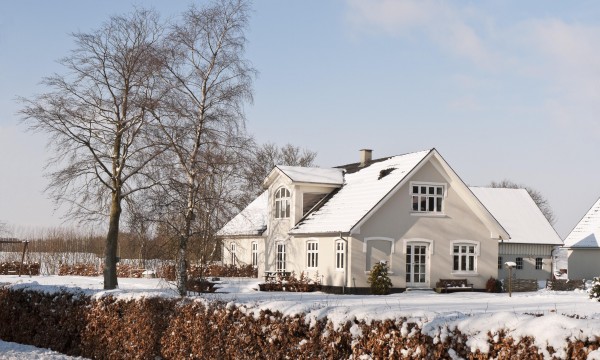So, how does a snow storm affect your roof? Snowstorms aren’t uncommon in the Northwest, but this winter, the amount of snow and its longevity has been unprecedented.
But how does it really affect your roof long-term? When you experience heavy snow and blizzard weather, you need to give your roof extra attention. While it may be tempting to shut off the heat, having a little warmth in your home can prevent ice dam damage.
This article will show you the effects of snow on a roof and why you should be mindful of it. Let’s get started!
It Causes the Roof to Sag and Form Depressions
Heavy snowfall can cause the roof to become weighed down and can sag. This is the reason why large depressions or concave shape is formed.
Additionally, continuous snowfall can lead to more water accumulation, leading to roof repair in the future. Over time, this can lead to cracking of the roofing material or rafters and may even lead to poor insulation and higher energy bills in the long term.
Ice Dams Can Lead to Water Leaks
When temperatures stay cold and snow accumulates, it can collect on the roof, where it forms ice dams. These are large ridges of ice that form along the eaves of the roof.
Additionally, it can cause far damage as water collects behind them and is unable to escape. This can result in water leaks and damage to the roofing system from underneath.
Furthermore, pressure from the ice dams can also cause deface the shingles, but also to the structural system of the roof. This can become a major issue if not addressed, as the water can seep in and cause greater destruction.
It Can Lead to the Formation of Mold
As snow accumulates on the roof, it can initiate moisture buildup. When this is combined with the condensation of warm air, it may result in water buildup between roofing tiles, which leads to the formation of mold.
Moreover, mold can also spread on wood framing and in the rafters, which can cause them to rot, affecting the structure of your home. To ensure that a snowstorm will not cause lasting damage, it is important to take the necessary precautions.
Ultimately, checking for drips in the attic should also be done regularly to ensure a lasting roof.
Create Strong Wind Gusts
A strong wind gust can cause shingles to become dislodged and allow moisture to seep into the roof. Over time, this can weaken the roof and may even require total replacement.
In addition, it also drives snow, ice, and debris deep into the cracks, which can further cause blocks or clogs. Hiring a roofing contractor for wind gust-proofing applications will help protect it from these elements.
Overall, these roofing services give an extra layer of protection against snowstorms, helping to keep your roof in tip-top shape and prolong its life.
A Guide to the Effects of Snow Storm on Your Roof
A snow storm can lead to serious long-term damage if a roof isn’t properly insulated and maintained. To avoid this, make sure they are winterized annually and heated when the temperature drops.
Taking extra precautions to protect it from winter weather will help ensure its life and longevity. Reach out to a professional to help secure your roof before the snow season strikes.
Did you find this article helpful? Check out the rest of our blog now for more!


